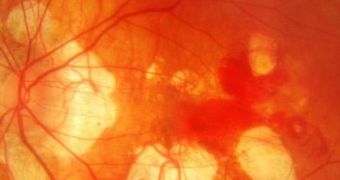A group of researchers at the University of Leeds, in the United Kingdom, says that their latest study provides more insight into the genetic roots of inherited eye disorders affecting young children.
The study used next-generation DNA sequencing methods to get the job done. Some of the conditions that were investigated included glaucoma and cataracts, the team says. Experts from the Flinders University in Adelaide, Australia, were also a part of the effort.
With the new data, researchers could conceivably develop a test that would inform would-be parents about their children's prospective risk of developing a severe eye disease. This will in turn allow the adults to seek genetic counseling before they conceive.
In the long run, the joint team hopes to be able to develop a new series of treatments and therapies against the targeted conditions, provided that the exact genetic underpinnings are fully understood.
All the members of the three families the team studies had trouble with the lenses and corneas of their eyes. While unrelated between them, all families displayed similar problems, which is what made experts select them for the new study.
When the lens or cornea does not develop properly, then vision becomes blurry or clouded. If left untreated, the issue can degenerate into glaucoma, and then blindness. However, even if caught in time, there is now way to be sure that the situation can be resolved through medication.
The genetic research shows that defects in the antioxidant protein peroxidasin are largely responsible for the improper development of eye components. The discovery was made by Leeds professor Dr. Manir Ali, the co-leader of the study team.
“We know that in healthy eyes, peroxidasin acts as a first line of defense against the damage that ultraviolet radiation and sunlight does to our skin. It may also help protect against cataracts in older people,” Ali explains.
“Our findings imply that this same protein is essential for the normal development of the lens and surrounding structures at the front of the eye,” he adds. The new study is published in the latest issue of the esteemed American Journal of Human Genetics.
“This DNA sequencing technology looks set to revolutionise the medical world, giving patients and their doctors more information than ever before about their genetic make-up and how it can affect their health and response to treatment,” Ali concludes.

 14 DAY TRIAL //
14 DAY TRIAL //